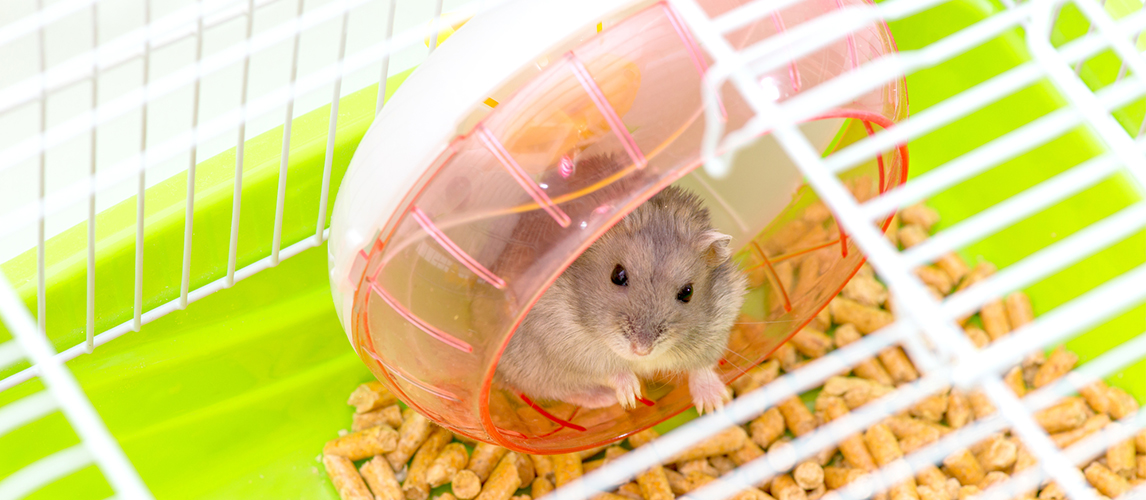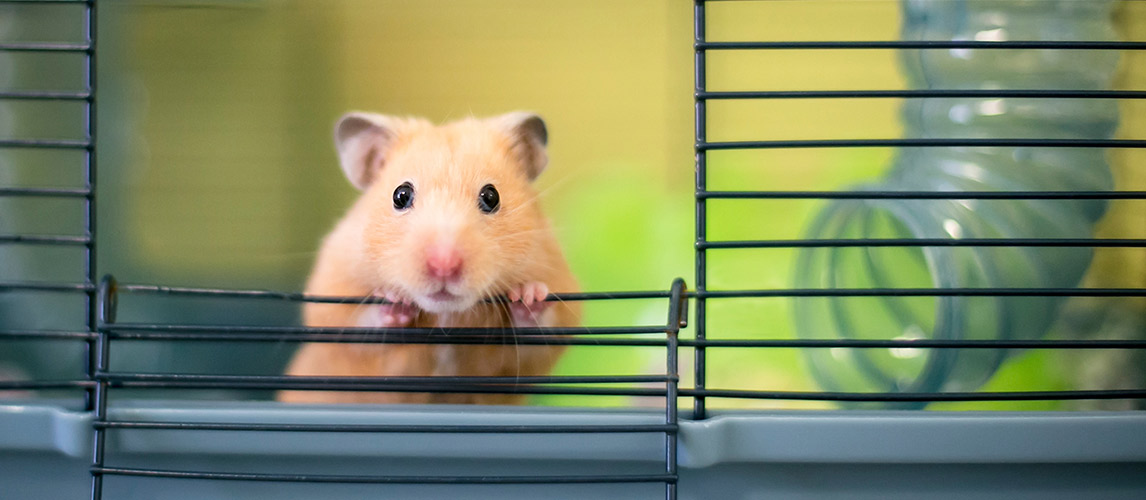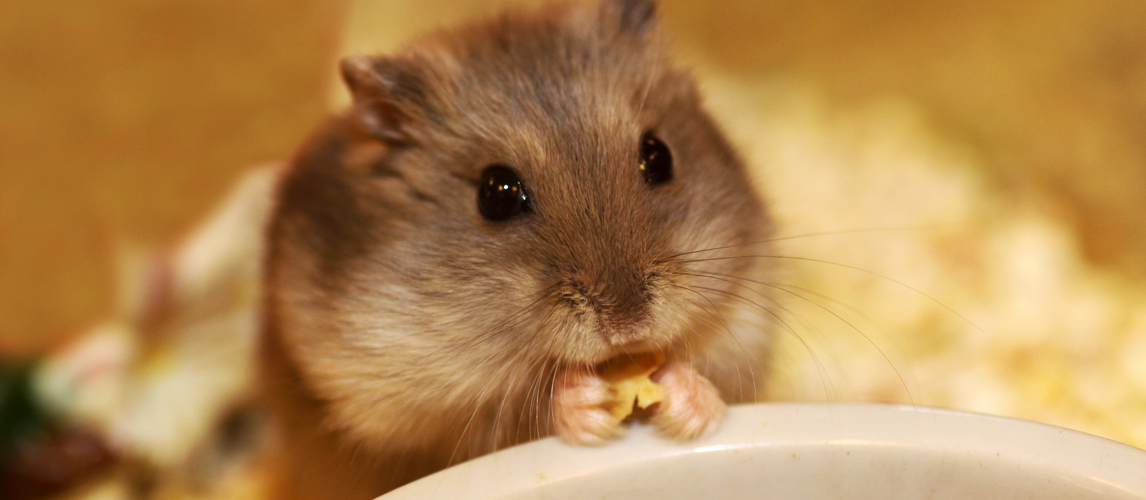Hamsters are fun pets and naturally clean animals. They spend a lot of time grooming and keeping themselves clean and neat. It is often an odor coming from the hamster or their cage that prompts owners to think that they want to bathe their little pet. However, unlike dogs, they only need their owners to help with hygiene in exceptional circumstances. Here we have collated expert opinions on why you should only bathe hamsters in emergency situations and look at alternatives to bathing. We also tell you how to bathe a hamster safely in 5 easy steps.
Step 1: Check That You Really Need to Bathe Your Hamster
Bathing hamsters is a last resort so the first step is to think about why you want to give your furry friend a bath. Most of the time, this is down to unpleasant odors. But hamster odors are never caused by a lack of a bath! Here are the main reasons why your hamster is probably smelling.
The Hamster’s Cage Needs Cleaning
Increase the frequency of cleaning your hamster’s cage by setting up a hamster cage cleaning schedule. Daily cleaning should be: removing wet bedding and replacing it with fresh bedding and removing poop and wet sawdust/paper from the toilet area. Weekly cleaning should be: completely changing the bedding, washing the food dish and water bottle with plain water, cleaning all of the toys with mild soapy water (using a pet safe detergent) and rinsing thoroughly. If you are nor sure what toys to get for your hammy, there are plenty of ideas here. There’s loads more information on how to clean a cage in How to Clean a Hamster Cage. A clean cage does not smell but an older hamster’s cage will get smelly more quickly than a baby hamster’s . If you have more than one hamster in the cage it will need to be cleaned more frequently and you will need to do some spot cleaning. It’s a good idea, therefore, to choose a cage that is easy to clean and there’s a great selection in The Best Hamster Cages in 2022.
The Hamster is Sick
Hamsters can suffer from a number of conditions that can make them have a stronger odor. Wet tail is a common condition that affects Syrian hamsters the most. The intestines become inflamed and they develop diarrhea. You will notice wet areas on their fur around their tail. Want to know about this nasty condition? Check out What is wet tail in hamsters? Hamsters can also develop fungal infections and skin conditions. Some of these can be related to issues with their immune system (which can be stress-related) or they could have a parasitic problem such as a mite or flea infestation. These need to be checked out by your vet and there is detailed advice in How to Get Rid of Fleas on Hamsters
The Hamster is in Heat
A female hamster will come into heat around every four days. This is when she is receptive to a male and will be willing to mate. In order to attract a mate, a female hamster’s scent glands will give off a particular odor at these times that is potent and musky. This is a perfectly normal biological process and giving your hamster a bath will not help at all.
We have plenty more hamster hygiene tips in Hamster Supplies Checklist!
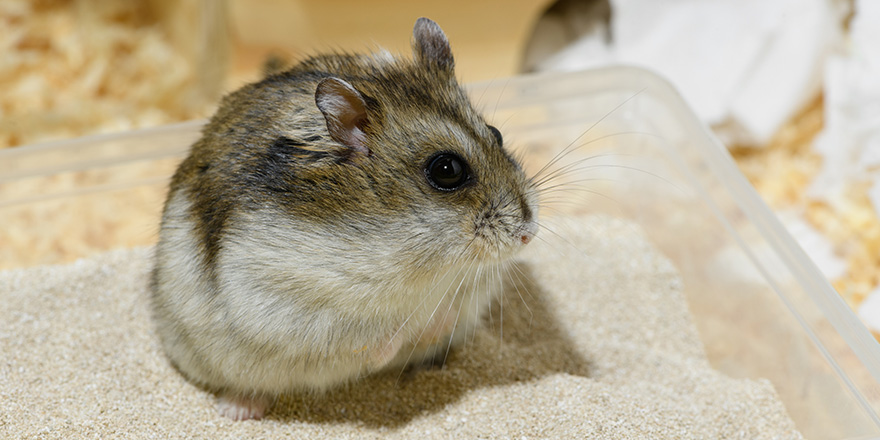
Step 2: Try Sand Bathing Instead
Could you give a hamster a bath in sand instead? This would be preferable to immersing in water. Most dirt can be rubbed off by the friction caused when your hamster tumbles around in the sand. In the wild, this is how a hamster would fulfil their grooming needs and remove dirt and parasites. It also removes oils from their coat and can help with skin problems. Before you rush in and bathe your hamster in a water bath, try a sand bath instead.
You must use the correct type of sand for this. It cannot be a dust bath made from dirt that you have collected from your yard or garden. That type of dirt could contain pathogens and is very fine so it could be breathed in and cause respiratory problems. Instead you need special hamster sand or chinchilla sand (this is widely available in pet stores) and place it in a container that is large enough for your hamster to roll around in. It is not advisable to leave it in your hamster’s cage all the time as they will probably use it as their toilet!
After a lovely sand bath, your hammy will shake off the excess sand or you could wipe it off for them with a soft brush. Most hamsters love sand baths – they are a real treat for them and a natural way for bathing your hamster. We have plenty more fun facts about hamsters for you in 8 Fun Facts About Hamsters.
Step 3: When You Need to Bathe a Hamster in Water
Sometimes hamsters can get toxic substances on their fur. This can happen if they escape from their cage and get into places that should not get into! A toxic chemical may not cause any harm on their fur but it could soon become a problem when your hamster starts to groom themselves. They will ingest the toxic substance which could cause burning in their mouth or more serious problems if ingested. Some substances dissolve in oil so you may have success trying to remove the substance using a soft cloth to gently rub the area with some coconut oil. If the substance is water soluble, this is one of the rare occasions when you may need to bathe a hamster.
Sticky substances are also a problem if your hamster could choke on it if they tried to bite it off. Chewing gum is a typical example and is more of a problem for a long haired hamster. If it is swallowed, it could cause a bowel obstruction. Whilst chewing gum is best cut out, some other sticky substances could be removed by bathing if a lot of the coat is contaminated.
Step 4: Alternatives to Bathing
There are plenty of ways to keep your hamster clean that do not involve a lot of water. Here are the main ones that hamster experts suggest:
- Spot cleaning: In a warm room, use some pet wipes or a wet cloth (with only a little water on it) and gently clean the area of your hamster’s coat that is dirty. You can add some mild pet shampoo to the water if you need to. Gently wipe your pet without pressing too hard – hamsters are very delicate creatures and you could injure them. Rub your hamster dry with a soft towel by stroking in the direction of fur growth before putting them back into their cage. Keep the cage in a warm area for a few hours to make sure the hamster does not get a chill.
- Cutting out the dirt: Sticky substances can be cut out of long fur using blunt-nosed scissors. It is easier to do this on longer fur – it may not be possible on a short-haired hamster. You need to be very cautious as you carefully trim away the contamination. Take special care near the hamster’s head and ears.
- Brushing the coat: Another option is to gently brush off the dirt with an unused toothbrush. Try to brush in the direction of the fur if you can. You may need to use a slightly wet toothbrush to remove some substances but always dry you hamster thoroughly with a hand towel after.
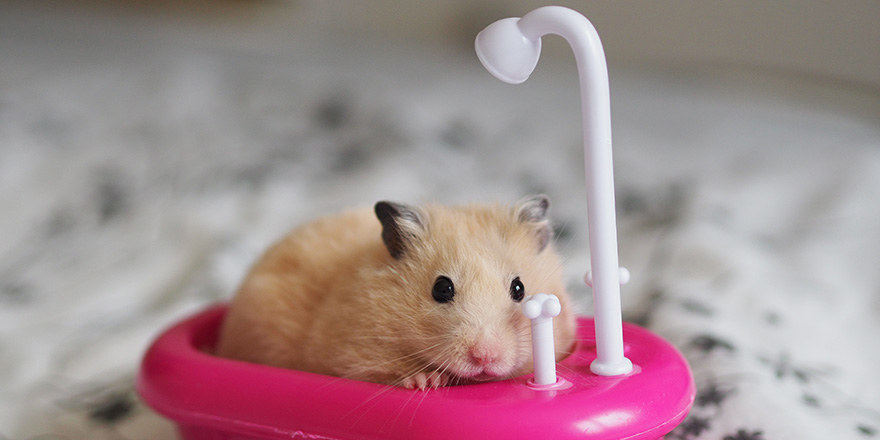
Step 5: Bathing Your Hamster in Water
Can you give a hamster a bath? Only if there is no alternative to immersion in water. Start by moving your hamster to a warm room. Put about half an inch of lukewarm water into a bowl. Place your hamster into the palm of your hand and carefully lower them into the water. Use the other hand to gently clean away the dirt from the hamster’s fur- you can use some unscented pet shampoo if you really need to but this must be thoroughly rinsed off and it must be kept away from the face. The shampoo left on the fur causes irritation possibly leading to dry skin.
Use a soft, dry towel to completely dry your hamster by patting them gently or rubbing in the direction of the hamster’s fur. Keep the cage in a warm place for several hours and perhaps give them a special treat chosen from The Best Hamster Treats in 2022.
Sources:
FAQs:
Yes, it is possible to give a hamster a bath but it is extremely stressful and potentially harmful. You should only bathe you hamster in water as a last resort. There are lots of other things that you can try first.
That depends what type of bath. A sand bath is very healthy for a hamster. In the wild, they would use a sand hamster bath or dust bath to help control oils and parasites. So, by all means, set one of these up for your hamster. Bathing your hamster in water is completely different and should be avoided it you possibly can. Water washes away the precious oils on hamster's fur and is very stressful and potentially dangerous for them.
There are plenty of ways to keep your little pet clean without water. You can try a sand bath, wiping them with a soft damp cloth or even cutting things out of their fur with a blunt scissors. If a substance has caused damage to your hamster's skin, you may need veterinary medicine to sort it out so give your vet a call.
Yes you can but only under extreme circumstances. It needs to be done very carefully and with only a very small amount of water - about a small cup full.


